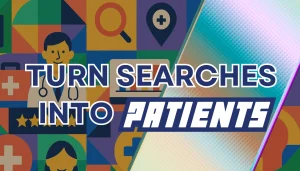Add Live Chat to Your Medical Website to Improve Patient Communication
Want to provide faster patient support, reduce missed appointment opportunities, and improve trust in your practice? Then it’s time to consider adding live chat for medical practices to your website. In healthcare, timely communication is more than just a convenience—it’s a crucial part of delivering quality care and creating a reassuring patient experience. When potential patients can get quick answers to their questions, they’re more likely to choose your clinic over another.
Why Live Chat Matters for Medical Practices
Patients often visit a medical website because they need information right away—whether it’s about appointment availability, insurance acceptance, or specific services. A live chat widget allows your staff to answer those questions instantly, without the delay of email or phone tag. It can also:
-
Help reduce no-shows by sending reminders or answering last-minute questions.
-
Streamline administrative work with canned responses to common inquiries.
-
Direct patients to a self-service knowledge base for after-hours support.
-
Offer a discreet way for patients to inquire about sensitive health topics.
By reducing barriers to communication, live chat can turn casual visitors into booked appointments and help existing patients feel more connected to your practice.
How to Add and Customize Live Chat on a Medical Website
Start by selecting a live chat platform that meets your compliance needs—HIPAA considerations are critical if you plan to collect any personal health information. Look for features such as encrypted messaging, file-sharing capabilities, and proactive engagement prompts that invite patients to start a conversation.
You can typically install the widget in one of two ways:
-
Guided installation: Many platforms provide a setup wizard to walk you through the process step-by-step.
-
Manual installation: Copy a small JavaScript code snippet into your website’s HTML, just before the closing
<body>tag.
For medical websites built on content management systems like WordPress, installation can be even easier. Search for the live chat plugin in your admin panel, install and activate it, then paste in your unique code from the provider’s settings.
Customizing for a Patient-Friendly Experience
-
Visual Design: Choose colors and styles that match your brand and create a calm, professional look.
-
Messaging: Use clear, reassuring language like “How can we help you today?” instead of generic prompts.
-
Proactive Triggers: Invite visitors to chat based on their behavior—such as spending more than 30 seconds on your appointment page.
Once your chat feature is live, track key metrics such as average response time, patient satisfaction ratings, and conversion rates from chat to appointment. Use this data to refine your responses, update your FAQs, and adjust your proactive prompts.
Live chat isn’t a one-time setup—it’s an ongoing part of your patient communication strategy that can significantly improve service quality and help your practice grow.




